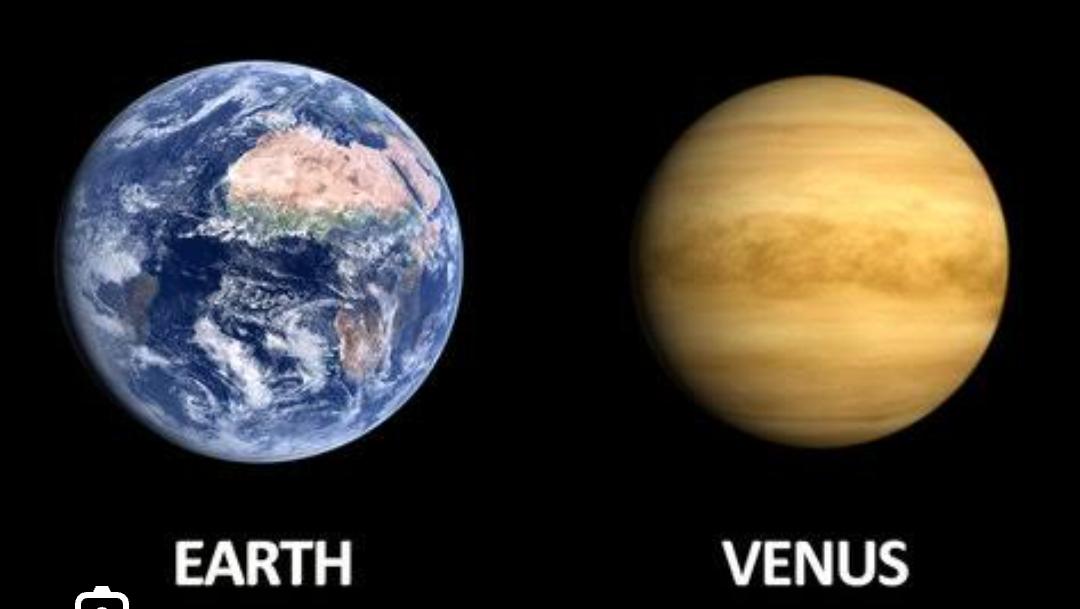Venus is often called Earth's "twin" or "sister planet" primarily because of their similar size, mass, and composition, suggesting they formed in a similar environment in the early solar system.
Here's a more detailed breakdown:
Size and Mass:
Venus and Earth are remarkably similar in size and mass, meaning they have a similar density and gravitational pull.
Composition:
Both planets have a rocky, layered structure with cores primarily composed of iron and nickel, surrounded by rocky mantles rich in silicates and other minerals.
Proximity:
Venus is Earth's closest neighboring planet in the solar system, further reinforcing the idea of a "twin" relationship.
Similar Formation:
Both planets formed in the same inner part of the solar system, suggesting they were made from similar materials.
Differences:
Despite these similarities, Venus and Earth have diverged significantly in their evolution, with Venus having a dense, toxic atmosphere and extremely high surface temperatures, unlike Earth's habitable environment.
Other facts:
Venus rotates in the opposite direction compared to Earth and other planets in the solar system.

